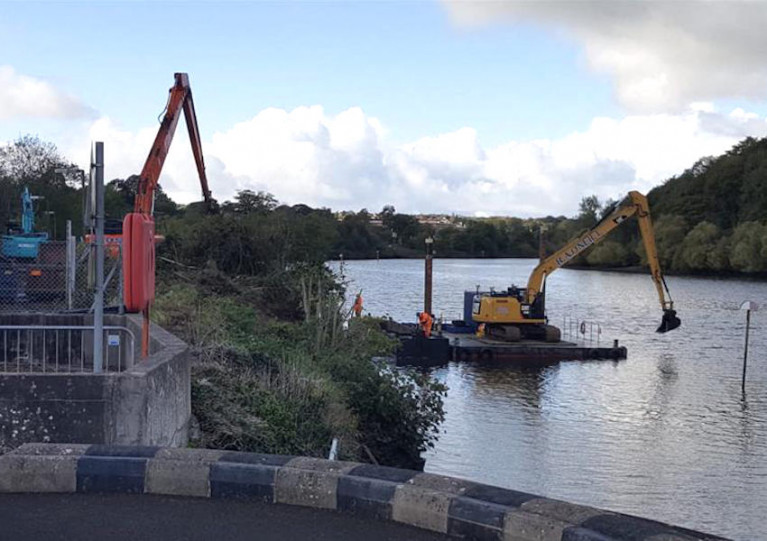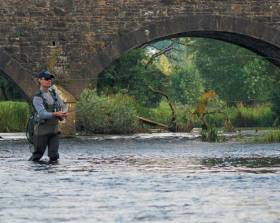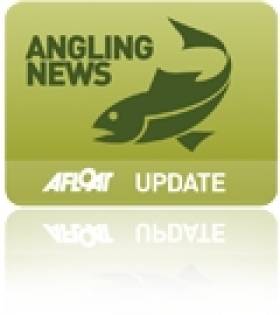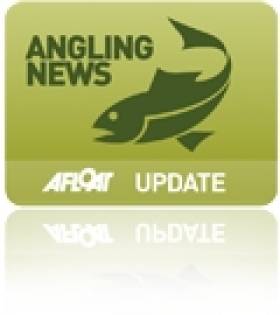Displaying items by tag: River Erne
‘Concern’ Over Shark Carcass Found in River Erne
Inland Fisheries Ireland has expressed concern over a shark carcass that was found in the River Erne in Co Cavan earlier this month, as BBC News reports.
The remains of what’s thought to be a small spurdog shark were found at Belturbet on Friday 17 September.
The State agency with responsibility for the protection and conservation of Ireland’s inland fisheries and sea angling resources believes the shark was caught at sea and later dumped in the river.
“The incident is a cause for concern for Inland Fisheries Ireland as the body advocates a ‘catch and release’ approach with shark species,” it said.
Bellanaleck Public Jetty & Slipway Closing for Winter Works
Waterways Ireland advises masters of all craft that the public mooring jetty and slipway at Bellanaleck in Co Fermanagh will be closed from this Monday 30 November until the end of March next year.
As previously reported on Afloat.ie, this closure is to facilitate the construction of a new 16-berth public mooring and slipway at the site on the River Erne south of Enniskillen.
Masters are requested to navigate the inland waterway with care around these works over the coming months, and heed instructions from safety stewards in the vicinity.
Extensive Winter Works Programme on Northern Ireland Inland Waterways
Waterways Ireland says it is undertaking a “significant programme” of maintenance works on inland waterways in Northern Ireland over the winter period.
On the Lower Bann, which connects Lough Neagh to the sea north of Coleraine, works will focus on maintaining safe access to and navigability of the river channel.
Dredging has already been completed downstream of the Cutts Lock in Coleraine, with more than 1,000 cubic metres of material removed.
A similar dredging programme is taking place this month in Movanagher to remove 200 cubic metres of material, while the mouth of Toome Canal will be dredged in early 2021.
Dredging of river-deposited material ensures the locks gates can operate and the channel remains clear enough for boats to pass, Waterways Ireland says.
Elsewhere, new upstream lock gates will be installed at the Carnroe lock, which last had its gates replaced more than 50 years ago.
Next year, Waterways Ireland will begin work on a two-year project to repair the weir at Carnoe and install a fish pass after planning permission was granted.
Winter is also when the Waterways Ireland team undertakes the removal of fallen trees and trims bank foliage along the navigation. This work will take place from Carnoe to the Cutts and at Toome.
The Toome Canal Walk, which Waterways Ireland says has seen a significant increase in users this year, will also be resurfaced.
Regional manager Joe Gillespie said: “These maintenance works are essential to maintain the heritage assets of the Lower Bann and ensure they are accessible to the widest range of users.”
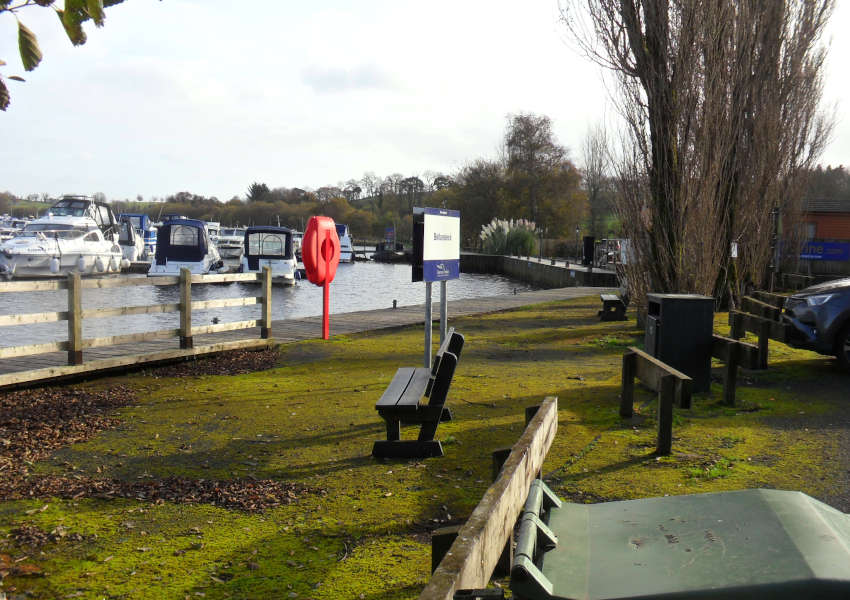 Bellanaleck in Co Fermanagh on the River Erne | Photo: Waterways Ireland
Bellanaleck in Co Fermanagh on the River Erne | Photo: Waterways Ireland
Meanwhile, this month Waterways Ireland will also commence an extensive works programme to improve Bellanaleck Quay on the River Erne.
The works, planned to be completed in time for the new boating season next March, are being undertaken to improve access and increase year-round mooring capacity near Bellanaleck village in Co Fermanagh.
Waterways Ireland’s design team will work with contractors on a plan to widen the existing slipway and construct a new quay wall with one fixed mooring as well as a 16-berth floating mooring.
“Waterways Ireland continues to invest in increasing access to Lough Erne for recreational and tourism activity,” says director of technical services Joe McMahon.
“Bellanaleck is a key lakeside location with a range of services which visitors enjoy and improved access will increase the duration and spend of visitors in the local area.”
Public Consultation On River Erne Trout Conservation Byelaw
#Angling - Inland Fisheries Ireland is seeking submissions from angling enthusiasts and other interested parties in relation to a proposal to introduce a byelaw to:
- Introduce a minimum takeable size limit for trout of 30cm (12”).
- Introduce a bag limit of two trout per angler per day.
The proposed byelaw would apply to all waters of the River Erne upstream of Derryheen Bridge, west of Butler’s Bridge, Co Cavan, including the waters of the Cavan River, Annallee, Dromore, Laragh, Bunnoe and Knappagh tributaries.
Submissions should be marked ‘Public consultation – Annallee-Dromore (River Erne)’ and sent by email to [email protected] or by post to:
The Director,
Inland Fisheries Ireland,
Station Road,
Ballyshannon,
Co Donegal
All submissions must be received in writing and will be published on the Inland Fisheries Ireland website.
The closing date for receipt of submissions is 5pm on Thursday 2 March.
Angling Seniors and Juniors Spring Into Action
#Angling - The National Coarse Fishing Federation of Ireland (NCFFI) will host its annual Senior Canals Championship on the Grand Canal at Daingean, Co Offaly in two weekend's time on Saturday 3 and Sunday 4 May, just before the bank holiday.
Sponsored by Waterways Ireland, the championship and the biggest canal angling event of the year, attracting participants from all over the country and the UK who will be welcoming the warming inland waters with eager anticipation of some fantastic catches.
For more information see the NCFFI Facebook page HERE.
In other news, the River Erne in Enniskillen will be the venue for Waterways Ireland's Junior Angling Classic series, running over three successive Saturdays from 26 April.
Organised by the Erne Anglers Club in partnership with Waterways Ireland, NI's Department of Culture, Arts and Leisure and Fermanagh District Council, the series gives ing children aged 11 to 19 the change to test their mettle in competitive angling.
Fishing in Ireland has more details about the initiative HERE.
Erne Pike Anglers' Misguided Fury Over Commercial Pike Netting
#Angling - Pike anglers in Fermanagh have taken to social media to campaign against what they call the 'illegal' commercial netting of pike in Lough Erne - but the story isn't all what it seems.
According to The Impartial Reporter, the pike nets men are licensed by Northern Ireland's Department of Culture, Arts and Leisure (DCAL) to catch pike during the open season from 1 December to 28 February annually.
A DCAL spokesperson said the commercial fishery is in place "to manage pike stocks and reduce their impact on trout stocks", a practice that is "in keeping with management practices elsewhere, including in high value large trout lakes in the West of Ireland".
It's reported that only five of seven licensed pike nets men took out the necessary permits to net pike on the Erne system in the most recent season.
But this hasn't stopped some anglers from threatening to break the law and tamper with pike nets in what appears to be misguided anger fuelled by online allegations.
The Impartial Reporter has more on the story HERE.
Irish Anglers Dominate World Open Pike Classic
Irish anglers showed their dominance at the Waterways Ireland World Open Pike Fishing Classic on the River Erne at Enniskillen recently.
Bothers Eddie and Frankie Roofe from Enniskillen came tops in the boat fly event, claiming the top three spots in the standings with their catches.
In the bank event, which featured a record 103 entrants, Lisburn angler Alan Foye took top prize with a 20lb 6oz monster.
But even that catch was overshadowed on day two of the boat event, when local angler Nick Seddon caught a 25lb 15oz whopper - the biggest fish in the history of the contest.
Seddon claimed first place and a £3,000 prize, followed by Darryl Curry in second and Joe third-place McDermott, both of whom caught fish over 24lb.
The team event was taken by Team Shannon, comprising father-and-son duos Joe and Jason McDermott and Barry and Finian Darby, with a total catch of 112lb.
A turnout of 363 competitors from 17 different countries caught between them a total of 227 pike over the weekend, five of which weighed over 20lb.



























